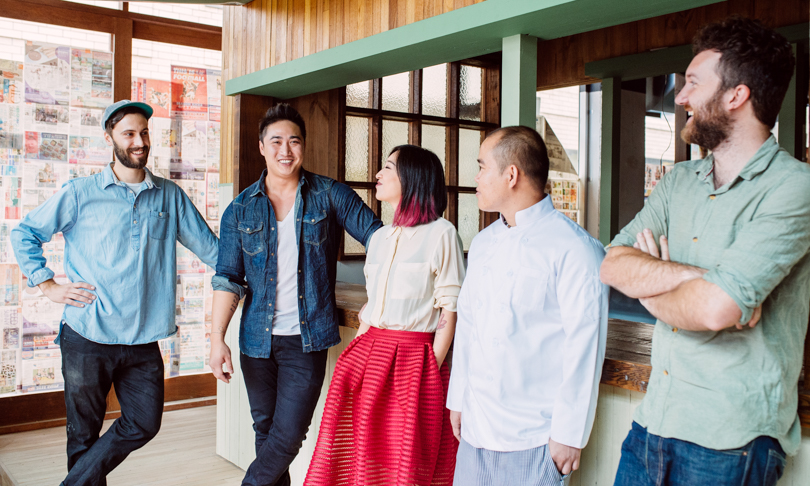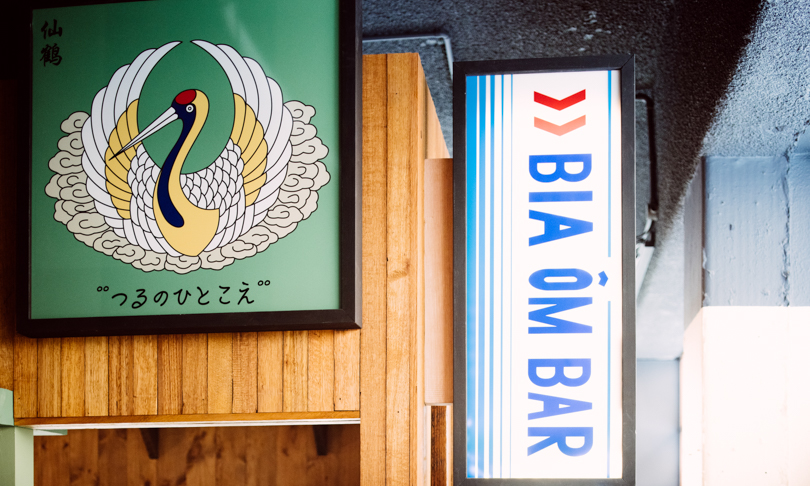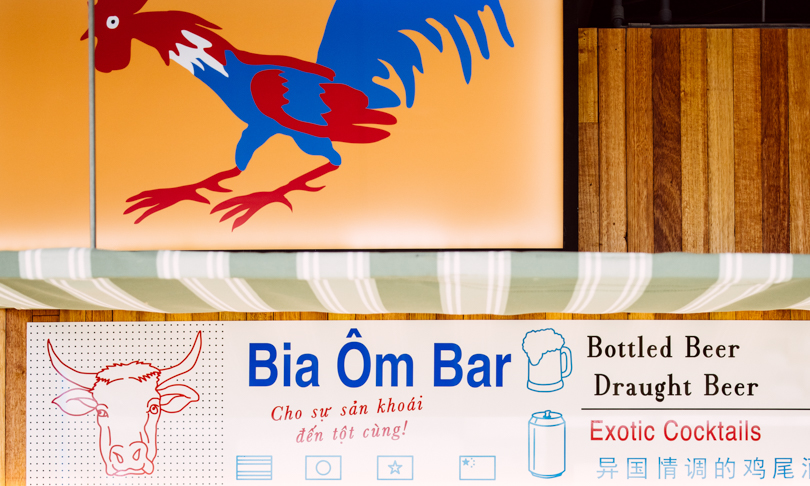The busy street food destinations of South East Asia are recalled with clarity thanks to an effective melding of interior and graphic design at new restaurant Gondola Gondola, which launches tonight.
Flavour through form
First-time restaurateurs Annie Liang and Tuoi Tran decided to open Gondola Gondola not only because they are interested in food, but also because they know so many talented people.
Gondola Gondola is open Monday to Thursday for lunch from 11.30am – 2.30pm and for dinner from 5pm – 10pm. After the kitchen closes the bar will remain open until midnight. On Fridays the restaurant opens all day from 11.30am – 2am and on Saturdays it is open 4.30pm – 2am.
Visit them at 1 Peel Street, Adelaide.
“I was interested in doing something in business,” says Tuoi.
“For a while I was interested in taking over a place down here [in the West End] – a karaoke bar. That didn’t work out but while all that was happening I met a lot of amazing, good people who have made it possible to do Gondola. Everything just sort of fell into place.”
But the lease on the space didn’t come so easily, with interest for the location at the corner of Hindley Street and the rapidly developing Peel Street running high.
“We fought for this location to be approved for three months. We had a lot of competition – someone offered a ridiculous amount to buy this place but in the end our concept won because the landlord liked what we wanted to do,” says Annie.
Annie and Tuoi will serve the food of their childhoods – inspired by traditional Vietnamese flavours but modernised with other South East Asian influences and input from chef Seksan Suntharaphai.
Produce for the menu is being grown locally by Tuoi’s family, who have converted part of their cucumber farm and begun planting diverse herbs and vegetables especially to cater for Gondola’s needs.
To house their concept, Annie and Tuoi wanted a space that recalled the street food culture of the South East Asian region without being heavy-handed.
Designer Matiya Marovich of Sans-arc Studio was one of the talented people that made them think opening the restaurant might be viable. They brought him on board to fit out the space and he, in turn, brought in graphic designer Carlo Jensen of Peculiar Familia to develop branding.
“One of the things we both focussed on is getting something a bit more authentic – we didn’t want that obvious association with references to Asia through images of guys with tuk tuks,” says Matiya.
“We wanted to do something a bit more subtle and invoke a sense of the environment in which the food would traditionally be consumed by using an appropriate material palette, scale and sense of proportion.”
Faced with a large space, Matiya decided to break it up into different sections. Most prominently, he has built a whole structure at the front of the space which looks like a hut and functions as a bar and kerb for you to wait at before being seated at your table. Behind that, a dining hall style space spreads out before the semi-open kitchen.
The entire restaurant is filled with Carlo’s graphics and curated images, such as old advertising and colourful lightboxes.
“For this I looked at a few South-East Asian food products, some fish sauces and things, and took some inspiration from that,” says Carlo.
“Having the right design and elements in the space makes it more enjoyable than sitting in a blank room and getting a blank plate with chicken cordon bleu on it.”
To achieve the right atmosphere, everything in Gondola Gondola has been custom-built from scratch according to Matiya’s directions, with the exception of the light fittings. Executing an entirely custom solution on Annie and Tuoi’s modest budget meant being a little bit lateral in sourcing materials.
“Pretty much the whole thing is recycled,” says Matiya. “The concept of getting one crew on site and making everything out of timber was there – so everything is hand-built and hand-planed. All the windows, for example, are made of recycled Oregon.”
“It’s been a long conversation about how we can do things well and access materials locally that channel the aesthetic properly.”
Sitting in the restaurant amid bubbling conversation with smells from the kitchen filling our noses, we remember that Australia is definitely a part of Asia. And we’re grateful that people like Matiya, Carlo, Annie and Tuoi are around to bring the best of the region together in 144m2.








